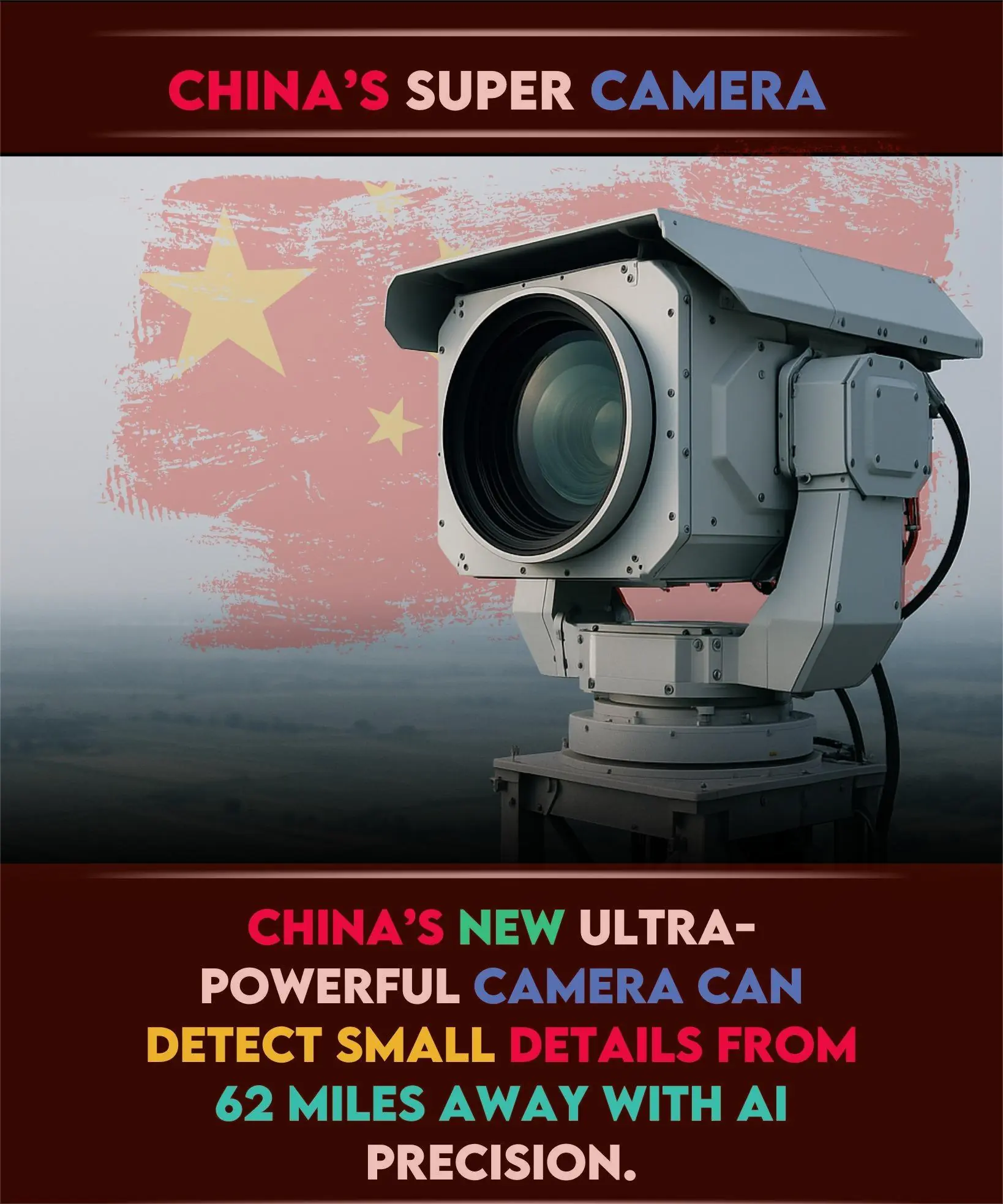
China Develops Record-Breaking Super Camera Capable of Seeing Details 62 Miles Away

China has once again pushed the boundaries of surveillance and imaging technology. A team of Chinese researchers has developed an ultra-powerful laser-based camera system capable of detecting incredibly small details from a distance of nearly 100 kilometers (about 62 miles) — a feat that has stunned scientists worldwide.
A Leap in Long-Range Imaging Technology
The innovation, unveiled in early 2025, is based on Synthetic Aperture LiDAR (SAL) technology. Unlike traditional cameras that rely solely on lenses, this system uses laser pulses to measure distance and reflectivity, then reconstructs ultra-detailed images through complex calculations and AI-assisted algorithms.
During a field test conducted over Qinghai Lake, the SAL camera successfully identified details as small as 1.7 millimeters — equivalent to reading a coin-sized mark from over 60 miles away. The test confirmed a distance measurement accuracy of just 15.6 millimeters (0.6 inches), making it up to 100 times more precise than existing high-resolution telescopic systems.
How It Works
The camera operates by emitting controlled laser bursts toward a target area. The returning signals, slightly altered by the terrain and distance, are processed to generate a clear image. When combined with AI-enhanced noise reduction, this technique allows visibility and accuracy previously considered impossible for Earth-based imaging systems.
Unlike optical zoom lenses, the SAL system does not rely on magnification through glass or mirrors. Instead, it creates a “virtual aperture” thousands of times larger than a traditional lens, allowing it to capture faraway targets with microscopic precision.
The Limitations
Despite its breakthrough capabilities, the camera currently cannot track moving objects effectively, as motion interferes with signal reconstruction. It also struggles in poor weather conditions such as fog, rain, or atmospheric turbulence. For now, it remains a proof-of-concept system rather than a deployed surveillance tool.
Implications for the Future
Experts suggest the technology could be applied to satellite imaging, border surveillance, and environmental monitoring, as well as in scientific research where ultra-long-range accuracy is crucial. However, it also raises concerns about privacy and militarization, especially as China continues to invest heavily in AI-driven surveillance systems.
If fully developed, the SAL camera could revolutionize how nations observe both Earth and space — turning distant landscapes into clearly visible detail. While it may sound like science fiction, China’s new “super camera” represents a very real step toward a future where no detail is too far to see.
News in the same category


The Science Behind Why Putting Something Cold Under Your Arms Can Calm You Down

What it means when your partner turns away after making love

The Janitor Who Sent Five Children to College: A Father’s 18-Year Lesson in Sacrifice

Miss Universe Thailand’s Soda-Tab Gown: A Shining Tribute to Her Parents

Japan’s Hybrid Coastal Defense: Engineering and Nature Working Together

Man in a Giant Dachshund Costume Steals Hearts Walking His Pet

Trapped in Darkness: How a Chinese Woman Survived 54 Hours in a Snake-Filled Well

The High Price of a Status Symbol: How a Teen’s Kidney-for-iPhone Deal Became a Cautionary Tale

❄️ Brave 11-Year-Old and Her Loyal Dog Save a Mother Goat and Newborn Kid in the Snow

A Young Man’s Act of Kindness Gives an Elderly Neighbor Comfort in Her Final Days

Running Through Grief — A Father’s Marathon of Love and Memory

Japan’s Gentle Way of Making Space — Moving Trees Instead of Cutting Them Down

The Moon and Saturn Meet — October 5

Pick A Bread To See What Kind Of Woman You Are

Zeus the Blind Owl — A Tiny Survivor With a Universe in His Eyes

Uber Will Soon Let You Book Helicopter Rides — A New Era of Urban Travel

From a Lost Check to a Life Rebuilt: The Remarkable Story of Elmer Alvarez

The Rickshaw Driver Who Changed Hundreds of Young Lives
News Post

Europe to Replace Passport Stamps with Biometric Entry/Exit System Starting October 12, 2025

The Science Behind Why Putting Something Cold Under Your Arms Can Calm You Down

What it means when your partner turns away after making love

Miracle Alert! 1 Leaf That May Support Healthy Blood Sugar, Cholesterol, and a Trim Waist

Chayote Juice: Unlock Natural Support for Joints and Bones

Why You Shouldn’t Pour Hot Water Into the Kitchen Sink

Is It Acceptable to Wear Underwear Two Days in a Row? A Surprising Answer

Debunking the Hype: Can One Food Really Rebuild Knee Cartilage Overnight?

The Janitor Who Sent Five Children to College: A Father’s 18-Year Lesson in Sacrifice

Miss Universe Thailand’s Soda-Tab Gown: A Shining Tribute to Her Parents

This Vitamin Could Help Reduce Blood Clot Risk in Your Legs – Seniors, Here’s What You Need to Know

6 Healthy Detox Juice Recipes for Wellness & Vitality

Top 10 Superfoods That May Help Reduce Proteinuria and Support Kidney Health

Miracle Mix: Castor Oil and Baking Soda for 15 Astonishing Health Benefits

Sparkle Like Never Before: 7 Natural Teeth-Whitening Secrets to Transform Your Smile ✨

Can Papaya Leaves Turn Gray Hair Black? Nature’s Secret to Youthful, Vibrant Locks!

Supercharge Your Defenses: 15 Mouthwatering Foods to Skyrocket Your Immunity Today

Unlock Thicker Hair in 30 Days: The Clove and Bay Leaf Secret You’ll Wish You Knew Sooner

Banish Blackheads with One Egg – The Ultimate Natural Secret Revealed!
